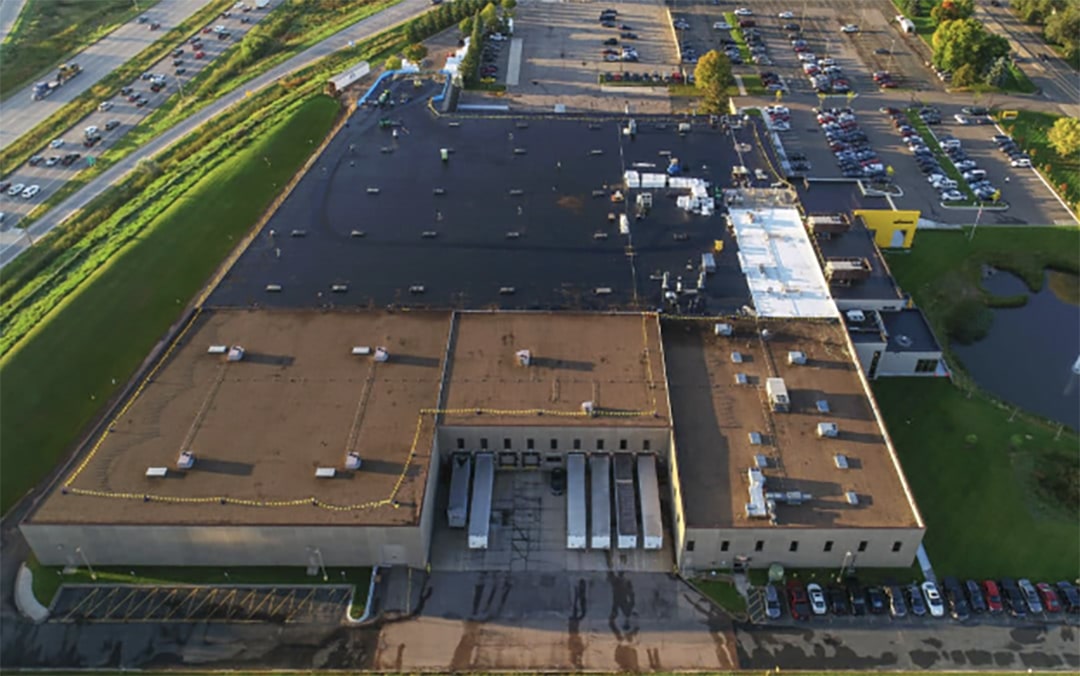When it comes to commercial roofing in Minnesota, selecting the appropriate system is essential for the long-term success of a commercial building in the region’s specific climate and conditions. With a variety of options available in the market, navigating through different roofing systems and making an informed decision can be challenging, particularly considering Minnesota’s unique weather patterns.
In this blog post, we will explore the world of commercial roofing systems to assist you in comprehending the various options and their benefits. Whether you are a commercial building owner or a facility manager, this article aims to provide valuable information to facilitate your decision-making process.
Single-Ply Membrane Systems
Single-ply membranes have become a popular choice for commercial roofing in Minnesota because of their ability to withstand harsh weather conditions. A single-ply membrane is a roofing system consisting of a single layer of synthetic material, commonly made of rubber or thermoplastic compounds. These membranes are specifically designed to offer a protective barrier for commercial buildings.
They are manufactured in large rolls and installed over the roof substrate using mechanical fasteners, adhesives, or heat welding techniques. The seams between the rolls are either overlapped and sealed or joined using specialized adhesives or heat-welding equipment. This installation process creates a continuous, seamless membrane that covers the entire roof area.
There are three primary types of single-ply membrane materials commonly used in commercial roofing: Thermoplastic Olefin (TPO), Ethylene Propylene Diene Monomer (EPDM), and Polyvinyl Chloride (PVC).
TPO (Thermoplastic Olefin)
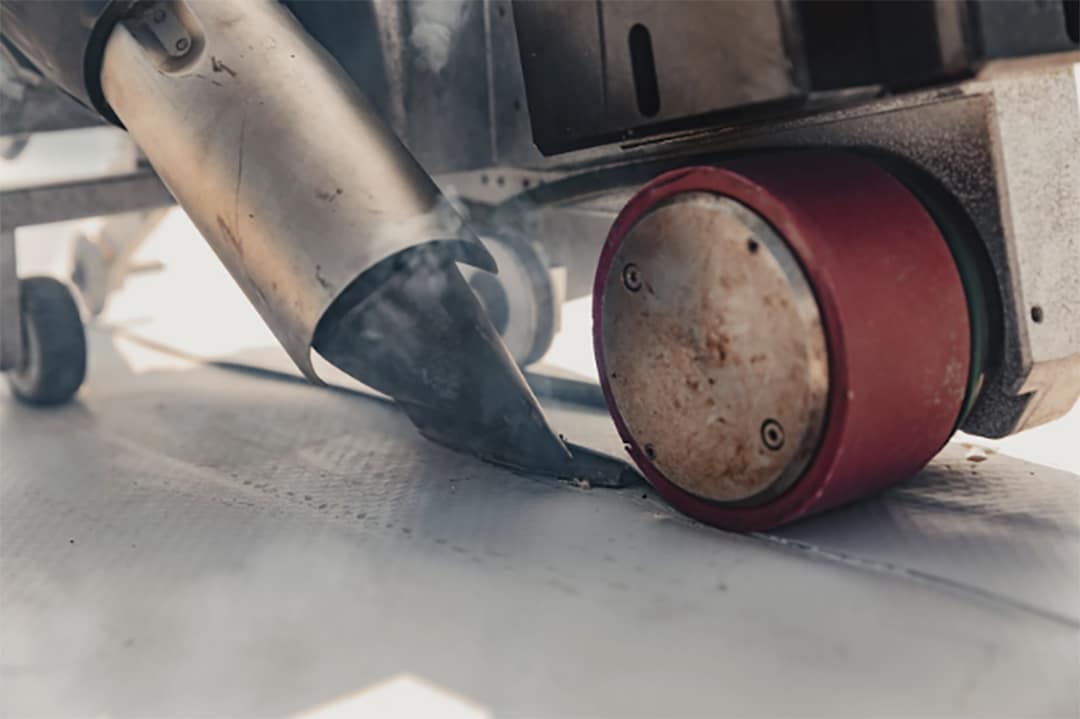
TPO membranes are comprised of a blend of polypropylene and ethylene-propylene rubber, granting them exceptional durability. They are specifically designed to withstand damage from hail, heavy winds, and temperature fluctuations. TPO membranes have demonstrated high resistance to punctures, tears, and impacts, making them a reliable choice for enduring various weather conditions.
Moreover, TPO membranes possess excellent durability, heat-reflective properties, and UV resistance. Their lightweight and flexible nature enables easy installation and enhances energy efficiency. With the capability to endure extreme weather conditions and reflect solar heat, TPO membranes provide reliable protection and cost savings in Minnesota’s challenging climate.
EPDM (Ethylene Propylene Diene Monomer)
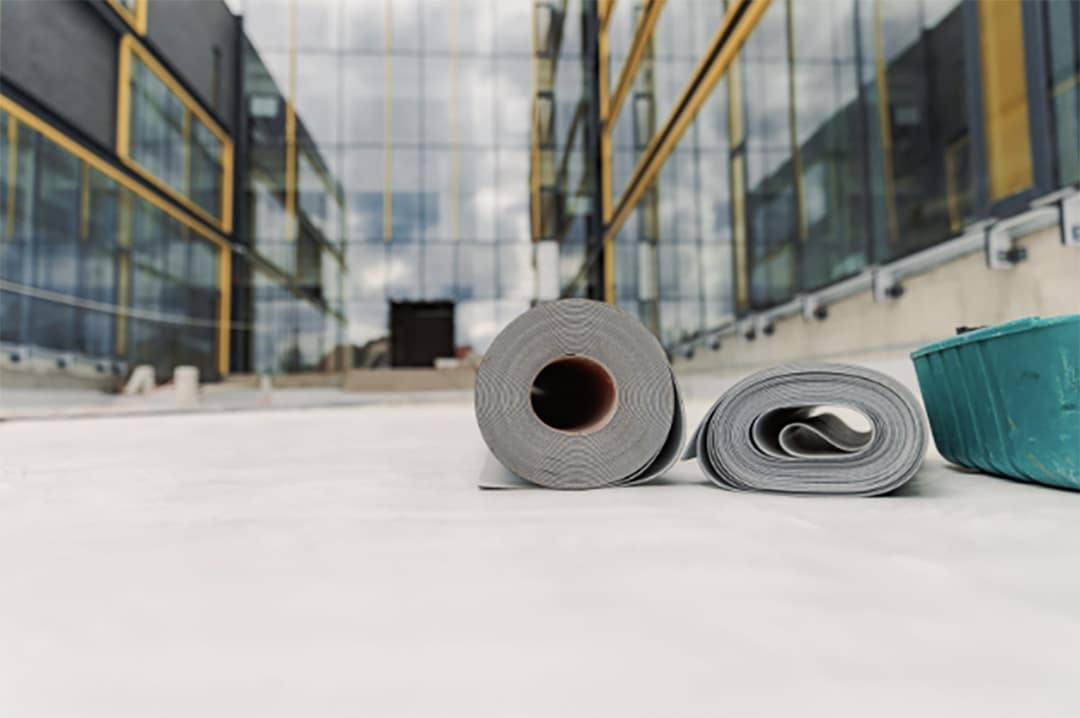
EPDM membranes have established themselves as a reliable and durable choice for commercial roofing in Minnesota. They are composed of a synthetic rubber compound known for its exceptional performance in various weathering conditions. EPDM roofs are specifically engineered to withstand the extreme temperature fluctuations experienced in the state. They can endure freezing temperatures during winter and resist thermal expansion and contraction, which minimizes the risk of cracks and leaks. The inherent flexibility of EPDM membranes accommodates building movement without compromising their integrity, ensuring long-term protection for commercial buildings.
Furthermore, EPDM membranes exhibit excellent resistance to moisture and water penetration. They have a proven track record of preventing leaks and providing reliable waterproofing capabilities. EPDM roofs are installed using fully adhered or mechanically attached systems, guaranteeing a secure and watertight seal that withstands the challenges posed by Minnesota’s weather conditions.
PVC (Polyvinyl Chloride) / PVC-KEE (Polyvinyl Chloride Ketoone Ethylene Ester)

PVC membranes are composed of a thermoplastic material that offers a combination of durability and excellent chemical resistance. They are designed to withstand the harsh elements encountered in Minnesota, including temperature extremes, heavy snowfall, and intense UV radiation. The thermoplastic composition of PVC provides outstanding resistance to weathering, ensuring the roof remains intact and performs well over an extended period. PVC membranes are also highly resistant to chemicals, making them suitable for commercial settings where the risk of chemical exposure is high. These roofs feature strong heat-welded seams, created by using specialized equipment to fuse the membrane together, resulting in a continuous watertight barrier that reduces the risk of leaks and water infiltration.
PVC-KEE is a specific type of roofing membrane that combines the benefits of PVC with the addition of KEE polymers. The KEE polymers enhance the chemical resistance of the membrane, making it more resistant to oils, greases, and other chemicals.
Built Up Roofing (BUR) Systems
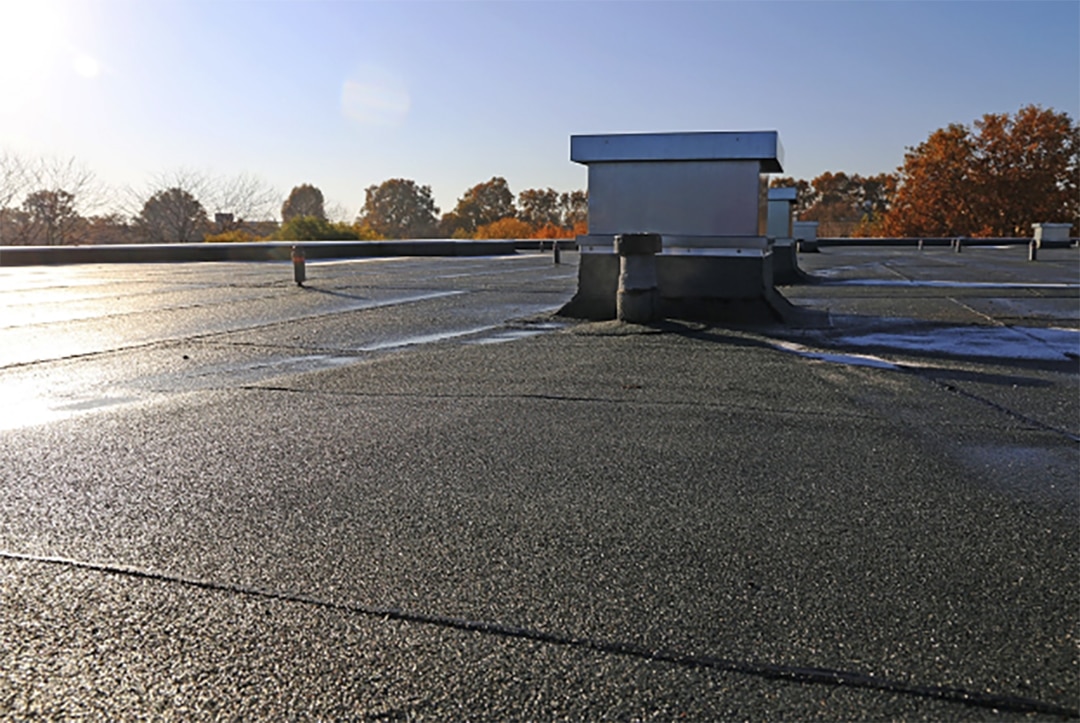
Traditional built-up roofing (BUR) systems have stood the test of time and continue to be a viable choice for commercial buildings. BUR systems typically consist of multiple layers of bitumen, a viscous and waterproof material, along with reinforcing materials such as fiberglass or organic felts. These built-up roofing systems are highly durable, as the multiple layers of bitumen and reinforcement provide excellent protection against various environmental factors.
Minnesota experiences extreme weather conditions, including harsh winters and occasional severe storms. The multiple layers of bitumen and reinforcement materials in built-up roof systems offer exceptional resistance to temperature fluctuations, high winds, and heavy precipitation. Additionally, they can withstand heavy foot traffic without sustaining significant damage, which is ideal when maintenance personnel, equipment, and visitors may frequently access the roof for inspection, repairs, or installations.
Metal Roofing Systems
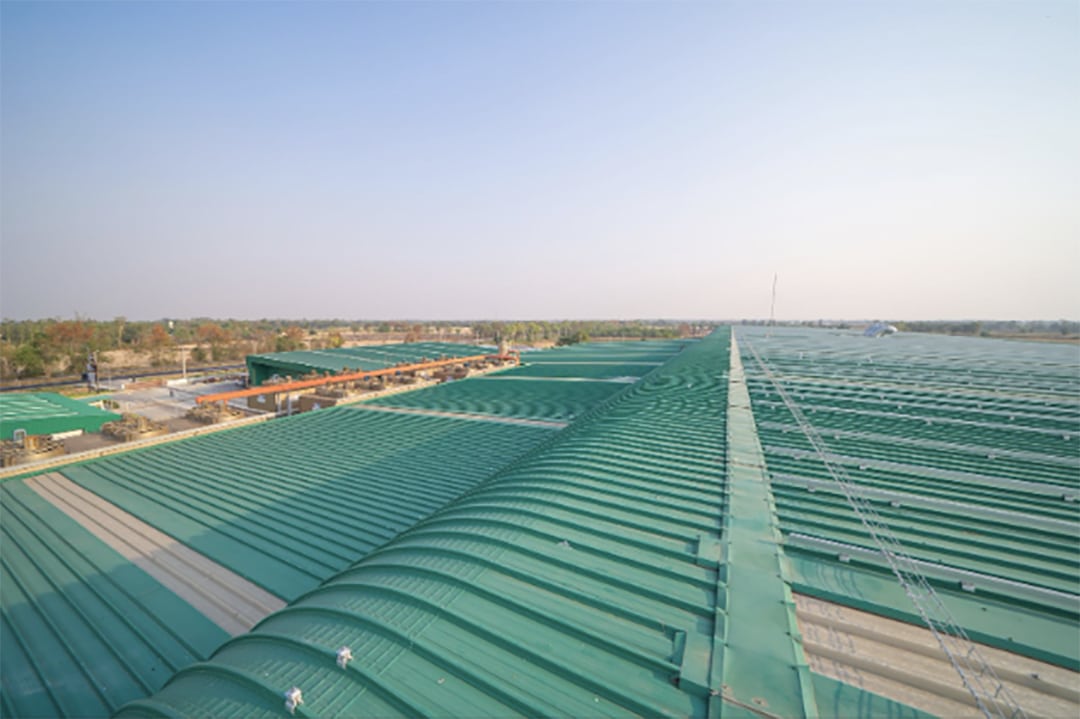
Metal roofing has gained popularity in commercial applications due to its versatility and longevity. Similar to single-ply membrane systems, metal roofing systems come in various types, including standing seam, corrugated panels, and metal shingles, offering diverse aesthetic options to suit different architectural styles and design preferences.
Standing seam metal roofing consists of vertical metal panels with raised seams that interlock with each other. The seams are typically hidden, providing a clean, sleek appearance. This type of metal roofing is known for its durability and excellent weather resistance. It is highly resistant to leaks and can effectively shed water and snow. Standing seam metal roofing has a modern and architectural appeal, making it suitable for a wide range of commercial buildings.
Corrugated metal roofing panels feature alternating ridges and valleys, creating a wavy pattern. They are known for their strength, affordability, and ease of installation. Corrugated panels are lightweight yet durable, offering good resistance to wind, hail, and other severe weather conditions. Corrugated metal roofs have a traditional and rustic appearance, often used for agricultural, industrial, and rural buildings.
Metal shingles are individual roofing units that resemble traditional roofing materials such as asphalt shingles, wood shakes, or slate tiles. They are typically designed to interlock or overlap, providing a seamless appearance. Metal shingles offer the benefits of metal roofing, such as durability and longevity, while mimicking the look of other materials. They are available in a variety of styles and colors and are a popular choice for commercial buildings where a classic or traditional look is desired while still enjoying the advantages of a metal roof.
Metal roofing systems also offer exceptional resistance to fire, insects, and rot, providing an added layer of protection. Unlike traditional roofing materials such as wood or asphalt, metal does not combust, making it a safer choice in fire-prone areas. Additionally, metal is not susceptible to insect infestations or rotting, ensuring the longevity and durability of the roof.
Roof Coating and Restoration
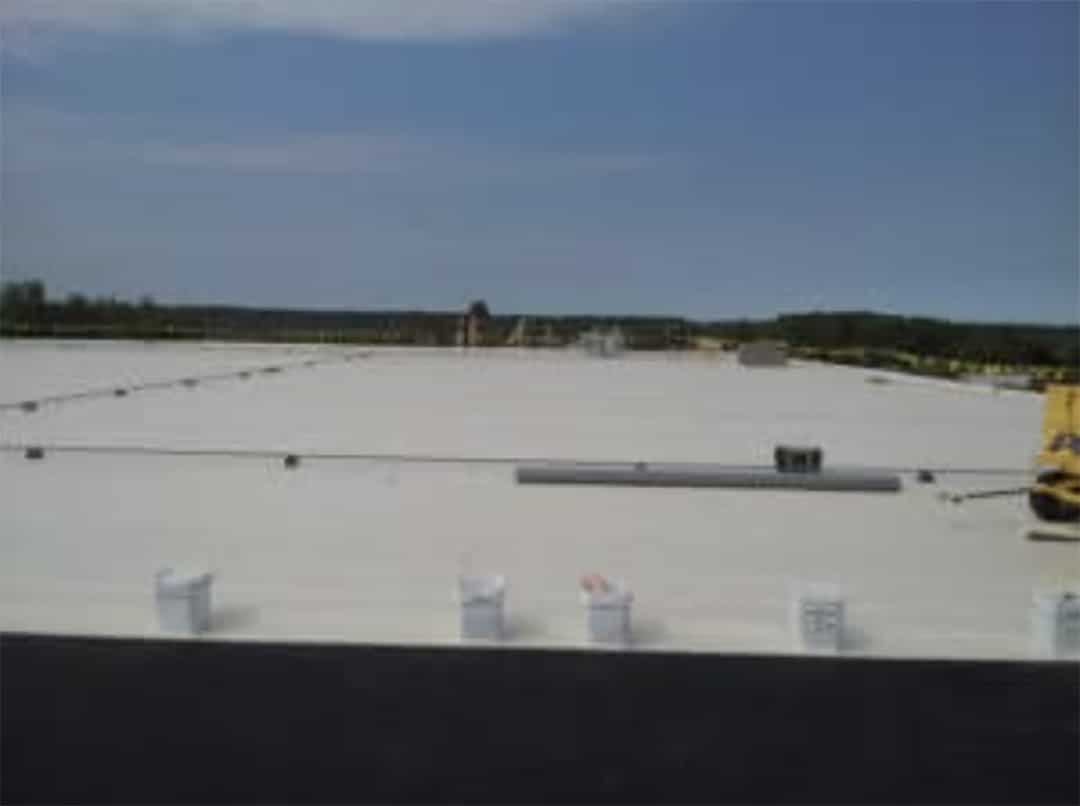
Roof coatings and restorations offer a cost-effective solution to extend the lifespan of an existing commercial roofing system. These coatings are applied directly to the surface of the roof, forming a protective layer that enhances waterproofing, provides UV protection, and reduces energy consumption.
There are various types of commercial roof coatings, including acrylic, silicone, and polyurethane coatings. Each type of coating offers its own set of benefits. Acrylic coatings are known for their excellent durability and weather resistance. They provide a seamless protective barrier that shields the roof from moisture infiltration and UV radiation. Silicone coatings, on the other hand, are highly flexible and can withstand extreme temperature fluctuations. They offer superior UV resistance, preventing premature deterioration and prolonging the roof’s lifespan. Polyurethane coatings provide exceptional strength and impact resistance, making them suitable for roofs that experience heavy foot traffic or potential damage from equipment.
When considering the restoration process, it is crucial to assess the condition of the existing roof to determine the suitability of roof coatings. Roof restoration can be a cost-effective alternative to complete roof replacements when the underlying roofing system is still structurally sound. This process typically involves cleaning the roof surface, repairing any damaged areas, and applying the appropriate coating system. It can save costs compared to a full roof replacement while extending the lifespan of the existing roof.
However, it is important to note that not all roofs are suitable for restoration. If the roof has significant structural damage or if the underlying materials are severely deteriorated, a complete replacement may be necessary. A professional roofing contractor can assess the condition of the roof and provide recommendations on the most appropriate course of action.
In conclusion, choosing the right commercial roofing system is essential for the long-term success of a building in Minnesota’s unique climate. Single-ply membranes like TPO, EPDM, and PVC offer durability and energy efficiency. BUR (built up roof) systems are reliable in extreme conditions. Metal roofing provides versatility and resistance. Roof coatings and restorations cn extend the life of existing roofs. Consulting with a professional commercial roofer is key to making an informed decision.

For expert guidance and assistance with all your commercial roofing needs, look no further than Allweather Roof. Our experienced team is here to help you make informed decisions and provide reliable solutions that are tailored to your building’s specific requirements. Don’t wait until winter hits – take advantage of the pleasant weather and call us today. Let us inspect and fix your commercial roof to ensure its durability and protection throughout the upcoming season. Contact Allweather Roof now and rest easy knowing your commercial roof is in capable hands.

